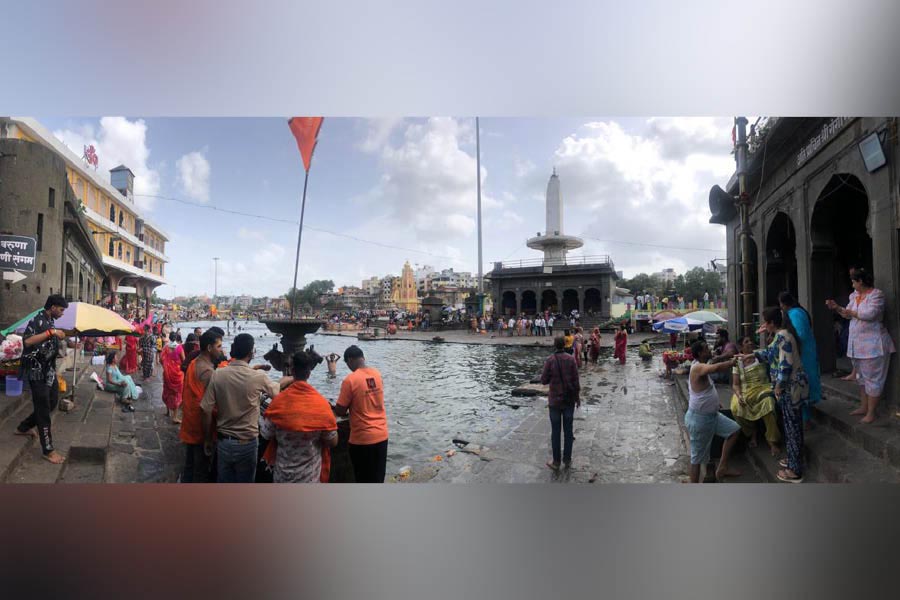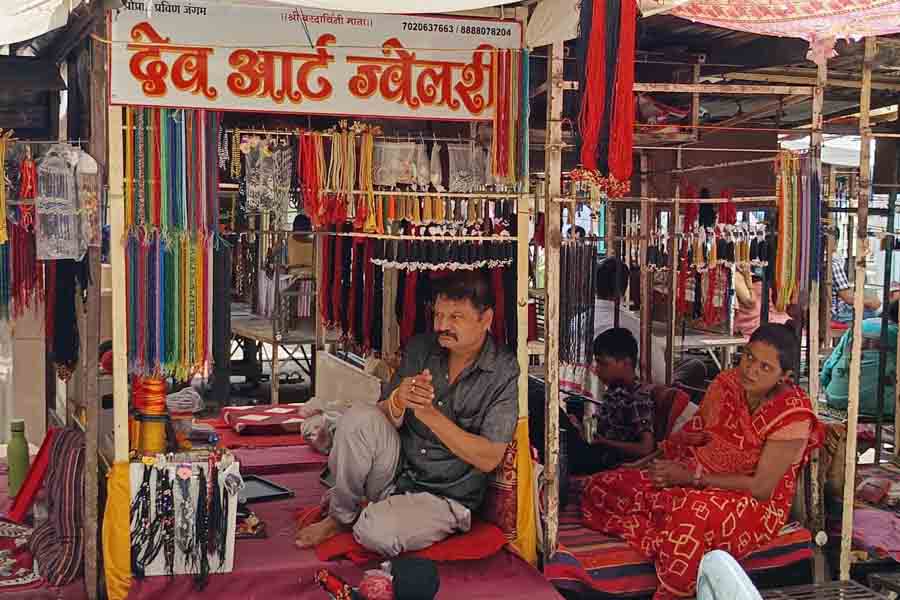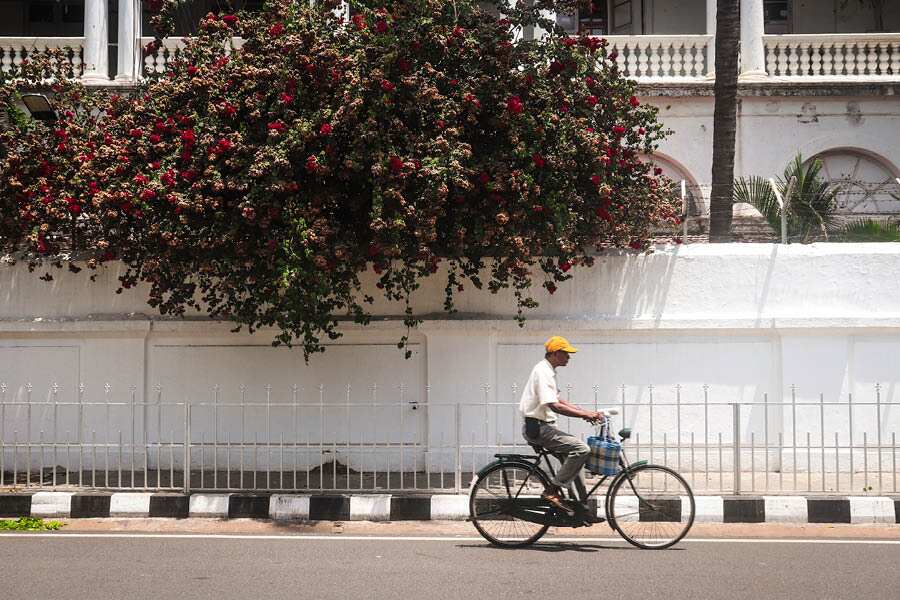Why Nashik?
Since time immemorial, Nashik in Maharashtra has been regarded as one of the holiest lands in India having essayed a perfect role of being a virtual melting pot of history, mythology and culture. The modern name of ‘Nashik’ is largely attributed to the mythological event of Lakshman, Lord Ram’s brother’s slashing of the demoness Surpanakha’s nose over her stated unacceptable advances and misbehaviour towards Lord Ram’s consort, Sita.
Fabled the world over as a prominent centre for the Hindu religion with countless presences along the banks of the river Godavari and also for being one of the four cities in the country to host Hinduism’s greatest event, the Kumbh Mela — Nashik’s importance remains paramount. Lord Rama is stated to have stayed here during his vanavas (forest exile) of 14 years and his venerated presence draws millions over each year.
Over different stretches of time, Nashik has also been known by other names - such as ‘Padmanagar’ during Satyayug, ‘Trikantak’ during Tretayug, ‘Janasthana’ during Dvaparayug and ultimately ‘Navashikh’ or ‘Nashik’ during Kaliyug and even as ‘Gulshanabad’ in the Mughal era. Matching steps with modernity, the ageless land continues to stay rooted to a fabled mythological past. My Kolkata traces the religious presences that cannot be overlooked along the Ramkund, Godavari, Panchavati and Tapovan areas.
On Ramkund
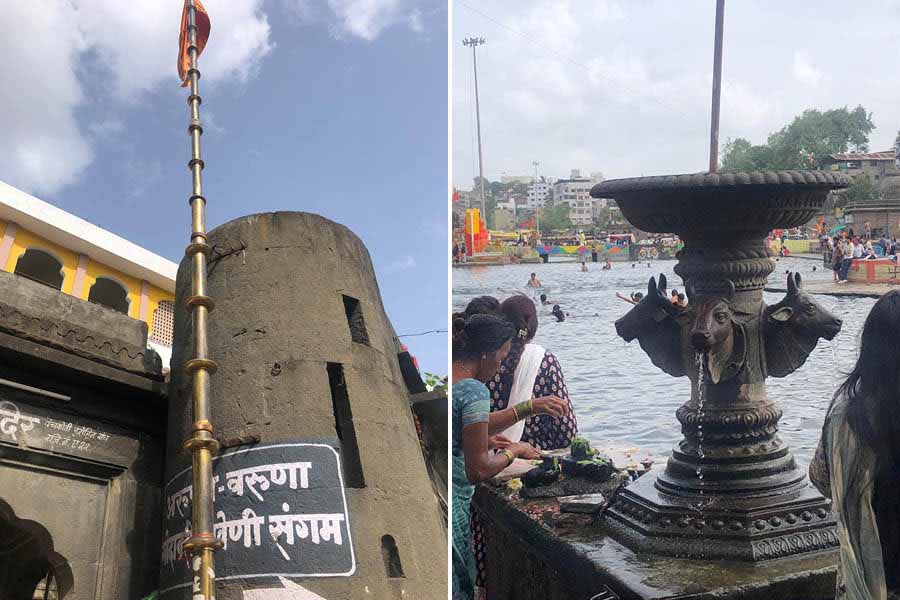
A ‘stambh’ marking the confluence of Nashik’s Triveni rivers — Aruna, Varuna and Godavari believed to be flowing below the previous two and (right) Godavari emerging from the cow-headed fountain at the Triveni Sangam
Amongst all the religious attractions in Nashik city that a devotee or visitor would reach - Ramkund along the Godavari riverbank is the most desired. According to mythology, Ramkund is that very sacred bathing ghat where Lord Rama is believed to have bathed while he stayed here during his exile. The spiritual allure is thus reason enough why countless over centuries have made it a popular pilgrimage site where apart from an ‘all sin cleansing bath’, rituals believed to be enabling moksha or liberation of the soul are performed regularly and since time immemorial. It is the most important place for the Kumbh Mela held after every 12 years and both banks of the river are dotted with many temples of great significance and historical presences. This is also the place where the rivers Aruna, Varuna and Godavari meet leading to the same being called Nashik’s ‘Triveni Sangam’.
NOTABLE TEMPLES ON RAMKUND STRETCH
Sundarnarayan Temple
Built in 1756 by Gangadhar Yashwant Chandrachud, this temple dedicated to Lord Vishnu is considered an architectural marvel as the rising rays of the sun always falls directly on the idols on March 21st of every year. Situated beside the Ahilyabai Holkar Bridge, the idol of Lord Vishnu here is called ‘Sundar Narayan’ – a form he attained after redeeming himself of the curse of Vrinda Devi, wife of the demon Jalandar. The temple presents an imposing architecture with a vaulted niche, porches, balconies, arches and domes. It is currently undergoing repairs and restoration in preparation for the next Kumbh Mela.
Shree Simhasta Gautami Ganga-Godavari Bhagirathi Mandir
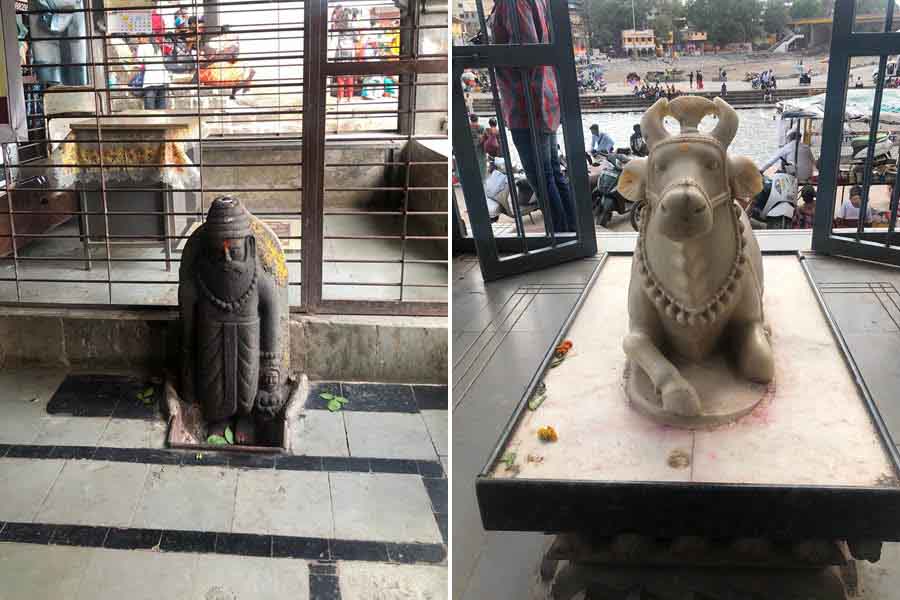
Inside view of Shree Simhasta Gautami Ganga-Godavari Bhagirathi Mandir and (right) a marble statue of Nandi outside Shree Vishveshwar Mandir.
Dedicated to goddess Godavari, the Shree Simhasta Gautami Ganga - Godavari Bhagirathi Mandir only opens after 12 years to coincide with the Kumbh Mela and is regarded as being among the most prominent of the 108 temples that are present on the stretch of the Godavari banks.
Shree Kapaleshwar Mahadev Mandir
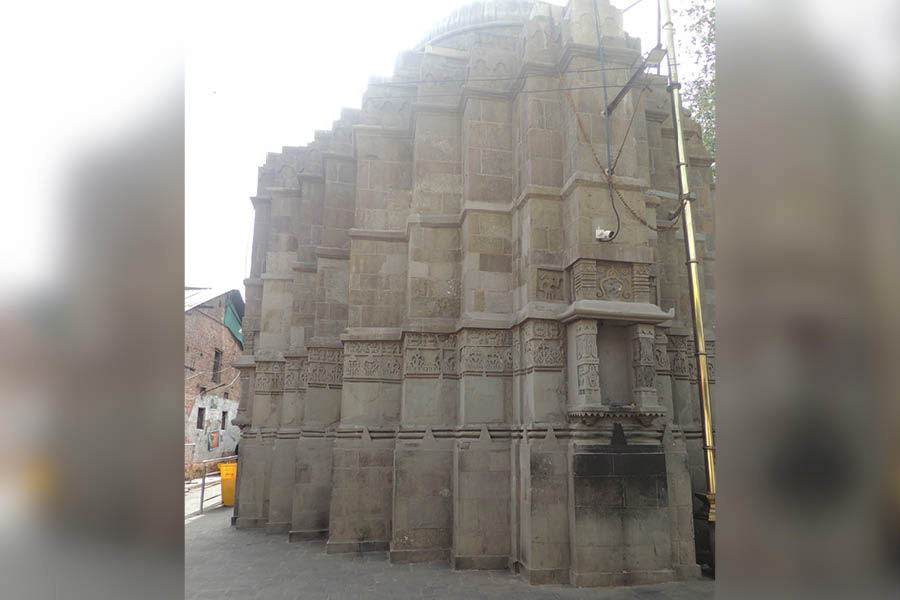
A glimpse of the rear section of Shri Kapaleshwar Mahadev Mandir.
This 600-year-old temple built around 1763 is dedicated to Lord Shiva and is reportedly the only temple in the country where Lord Shiva’s Nandi bull is absent. Located on a small hilltop near Ramkund, the temple can be accessed via a stairway or from a side entrance. The significance of the temple stems from the fact that it is believed to deliver one from the sins of ‘Gohatya’ – a wrongdoing that even Lord Shiva had once committed and had eventually found deliverance after bathing at Ramkund.
IN THE PANCHAVATI AREA
Kalaram Mandir
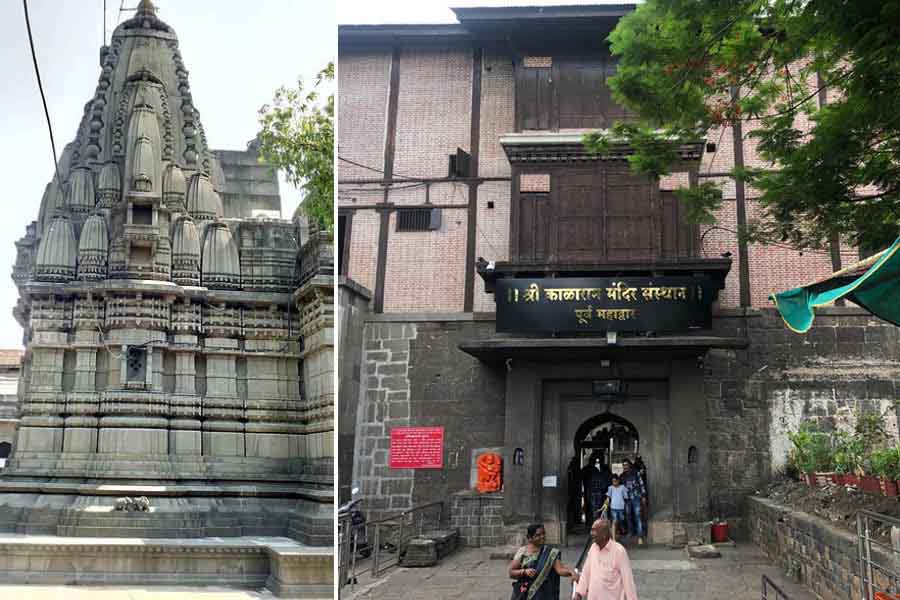
Kalaram Mandir and (right) the main entrance of Shree Kalaram Mandir. Wikimedia Commons
The Kalaram Mandir in Nashik’s Panchavati area was constructed in the year 1782 by Sardar Rangrao Odhekar at the site of an old wooden mandir. It is believed to be the place where Lord Ram stayed during the years of his exile in the forests. Among the finest of temples dedicated to Lord Rama in the country Kalaram Mandir houses standing 2 feet representations of Lord Ram, Sita, and Laxman all in black stone. Within the mandir precincts is a ‘Sabhamandap’ open from all sides and the most important event here is observed on the occasion of Ramnavami.
Sita Gumpha
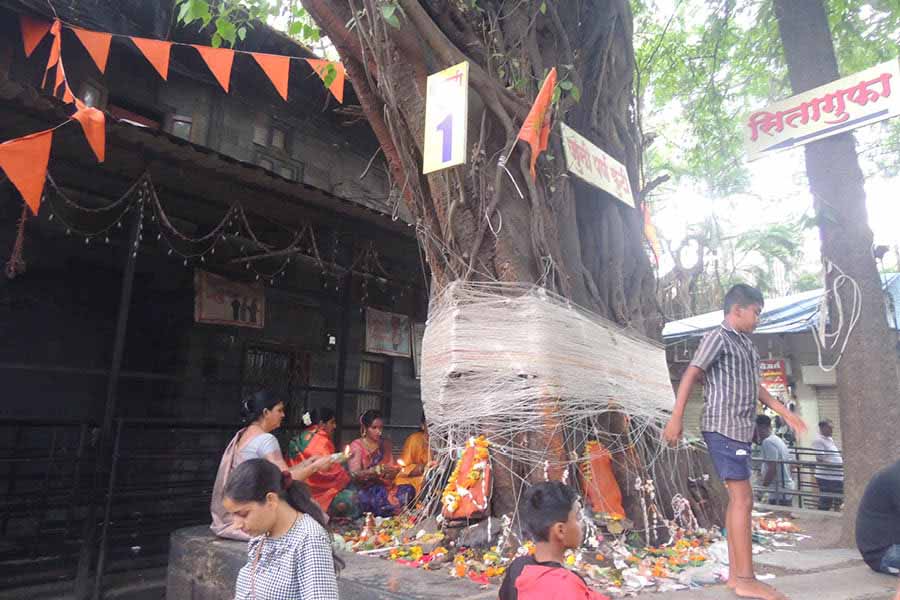
Vata Purnima puja being performed around one of the five banyan trees at Nashik’s Panchavati.
One of the must visit places in the Panchavati area is the Sita Gumpha where Ram’s consort Sita had stayed for a while and where many important episodes of Ramayana had played out. The cave is accessible through a narrow tunnel and is very popular today. It draws its name from the five banyan trees that are worshipped by all. Within the cave temple, an idol of Sita along with Lord Ram and his brother, Lakshman as well as a shivling can be seen.
Ardha Ardhanarishvar Mandir
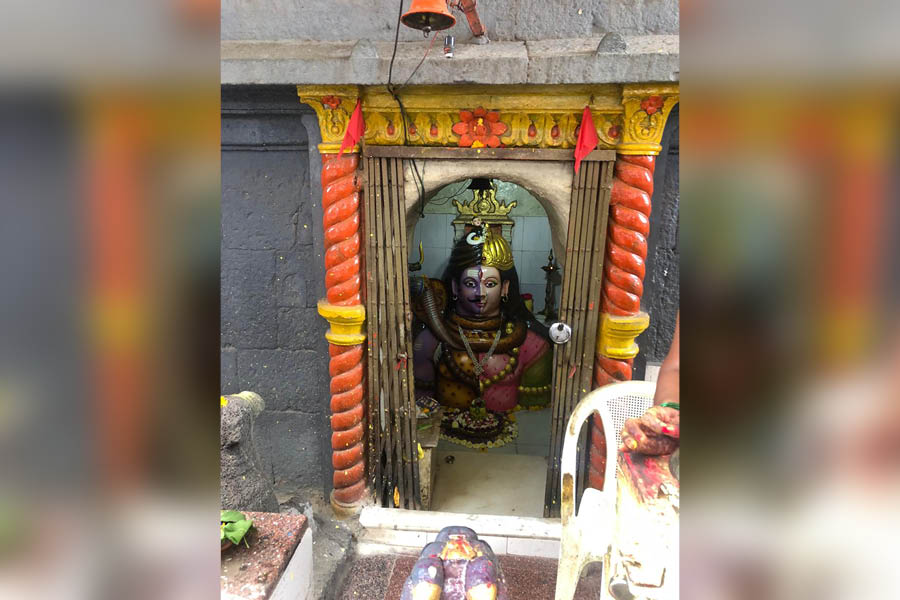
Ardha Narishwar Mandir.
The idol at the Ardhanarishvar Mandir in the Panchavati area depicts a composite form of the Shiv and Parvati. Ardhanarishvar is depicted as half-male and half-female, equally split down the middle. Ardhanarishvar represents the synthesis of masculine and feminine energies of the universe (Purusha and Prakriti) and illustrates how Shakti, the female principle of God, is equally significant.
THE TAPOVAN AREA
Tapovan in Nashik is the ‘sangam’ area or confluence of the two sacred rivers namely Kapila and Godavari. This is where Lord Rama, Sita and his brother Lakshman is said to have spent the maximum time of their exile of fourteen years.
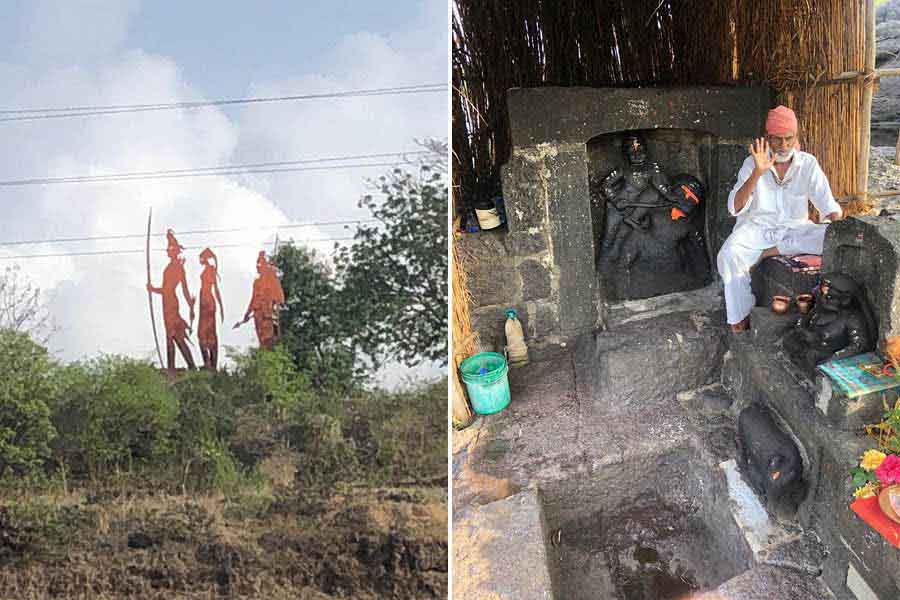
A modern-day installation at Tapovan marks the area where so many episodes of the ‘Ramayan’ is believed to have played out and (right) an ancient idol depicting the spot where Lakshman slashed demoness Surpanakha’s nose
This is the place where the very important episode of Ramayana – that of Lakshman slashing demoness Surpanakha’s nose took place. It is also famous as Lakshman is said to have performed ‘tapasya’ here so as to gain special powers to slay Meghnath or Indrajit, demon Ravana’s son. Rocky but with a mythological allure and with an enchanting green cover as well, the area draws countless visitors to the many temples that have been built in the area.
Laxmi Narayan Temple

Laxmi Narayan Temple, where devotees converge before stepping out for the sacred ‘snan yatra’ during Kumbh Mela and (right) Lakshman’s slashing of Surpanakha’s nose recreated through figurines at the Shree Lakshmanji Mandir.
Among the most visited mandirs in the Tapovan area, this is also the focal point where countless devotees gather before stepping out for the ‘Shahi snan’ of the Kumbh mela. The temple houses the idols of Lord Vishnu and his wife Goddess Laxmi.
